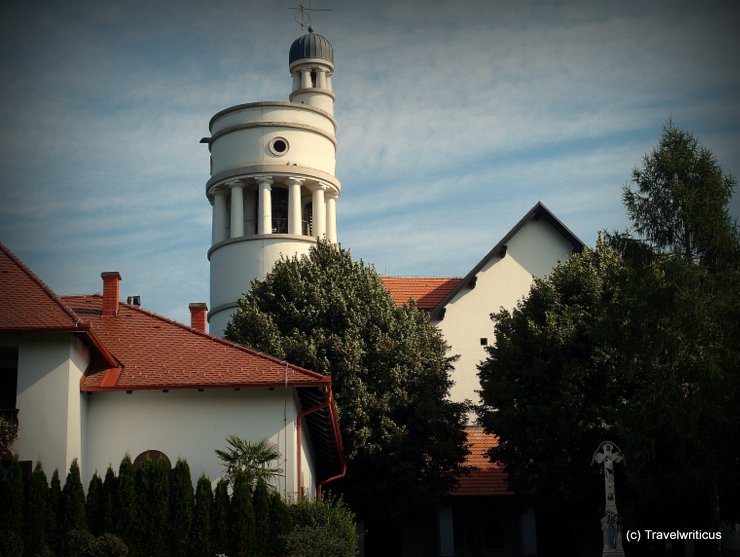
The Church of the Ascension (Župnijska cerkev Gospodovega vnebohoda) in Bogojina was built in the 1920s according to plans by Slovenian architect Jože Plečnik. The locals call the building Plečnik’s Church or White Dove (bela golobica). [German]
You only see what you know (Goethe)

The Church of the Ascension (Župnijska cerkev Gospodovega vnebohoda) in Bogojina was built in the 1920s according to plans by Slovenian architect Jože Plečnik. The locals call the building Plečnik’s Church or White Dove (bela golobica). [German]

In the areas of Slovenian Styria (Slovenska Štajerska), Carniola (Kranjska)and the Austrian state of Carinthia (Kärnten), hikers find these traditionally painted bee boards (Panjske končnice). With the help of these paintings, beekeepers identify a particular hive.
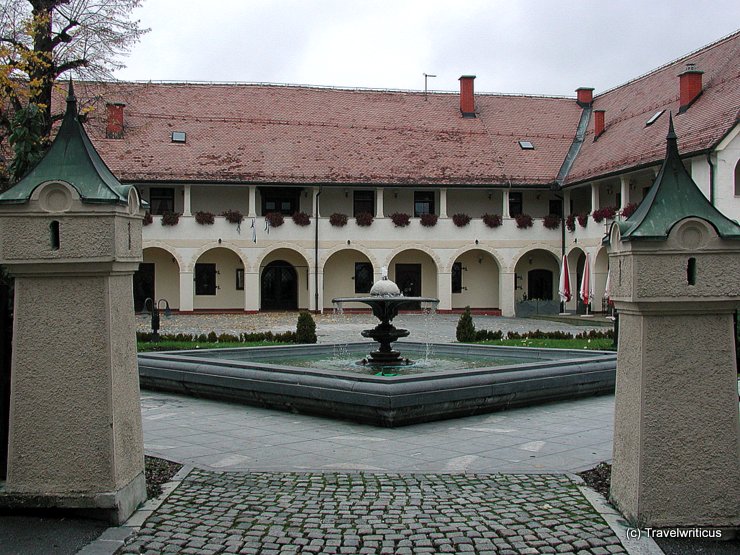
Rotenturn Manor (Dvorec Rotenturn) stands in the Slovenian city of Slovenj Gradec. It is one of the town’s most important venues for cultural events. [German]
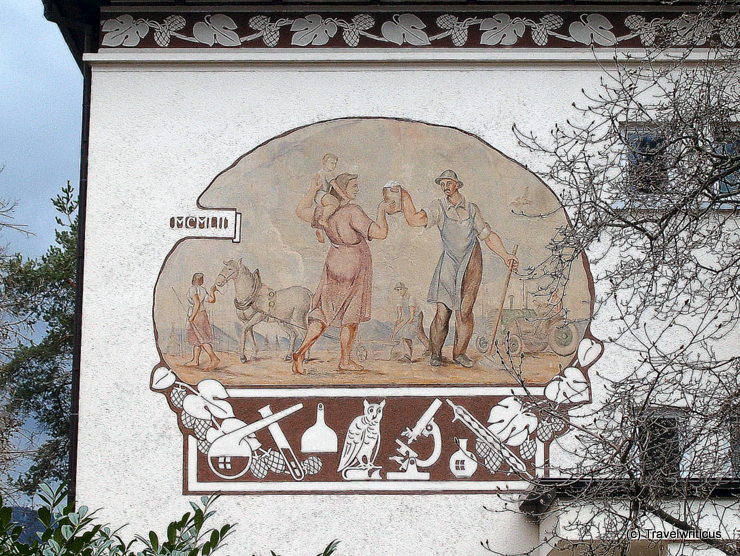
A pretty narrative mural on the Slovenian Institute of Hop Research and Brewing (Inštitut za hmeljarstvo in pivovarstvo Slovenije) in Žalec. This institute is located next to the museum about hop-growing and brewing industry in Slovenia.
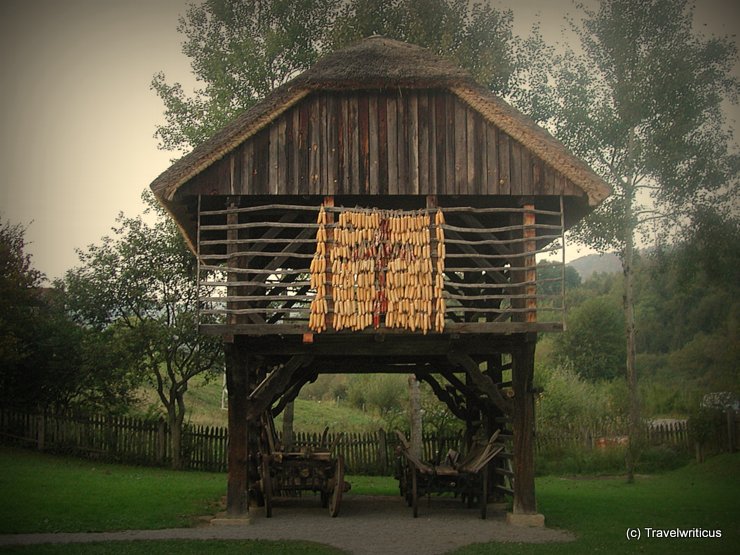
While travelling through Slovenia, I love to look for agricultural structures called Kozolec. These are traditional hayracks which are typical for this part of Europe. They are not only utilitarian but also known for artsy adornments.
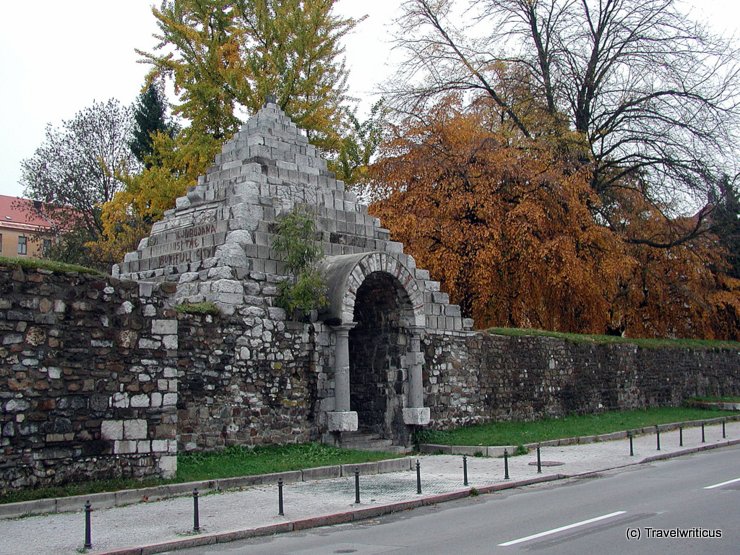
The ancient Roman name of Ljubljana was Emona. Today one can still see some Roman elements in the city. E.g. this redesign of a part of the Roman town walls created by architect Jože Plečnik. The reconstruction of the walls is not really authentic but works as remarkable monument to the former presence of the Romans.
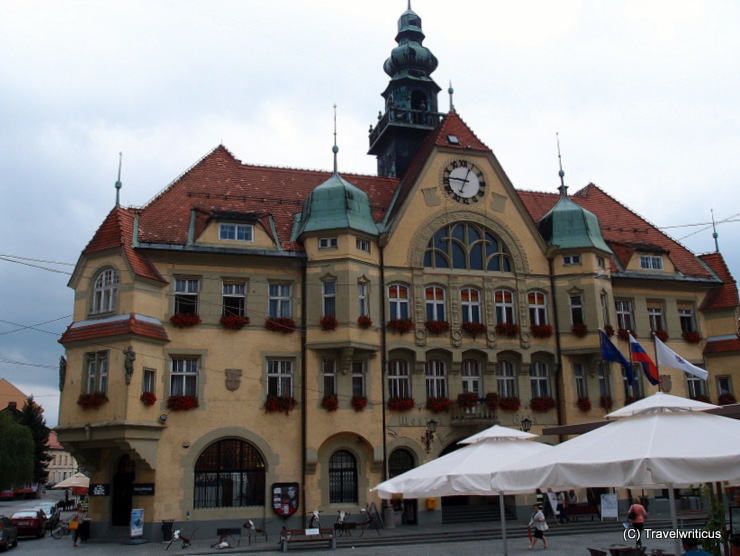
Architect Max Freiherr von Ferstel built the New Town Hall of Ptuj from 1906 to 1908. Max Ferstel is the son of Heinrich Freiherr von Ferstel, known for numerous buildings in Vienna in the style of historicism. [German]

A delicacy of Portorož is the salt-flower cake (Torta Solni cvet). Portorož is known for the Sečovlje Saltworks (Sečoveljske soline) where salt is still produced in a traditional way. The depicted cake I had at the Café Central, a café of the LifeClass Hotels & Spa.
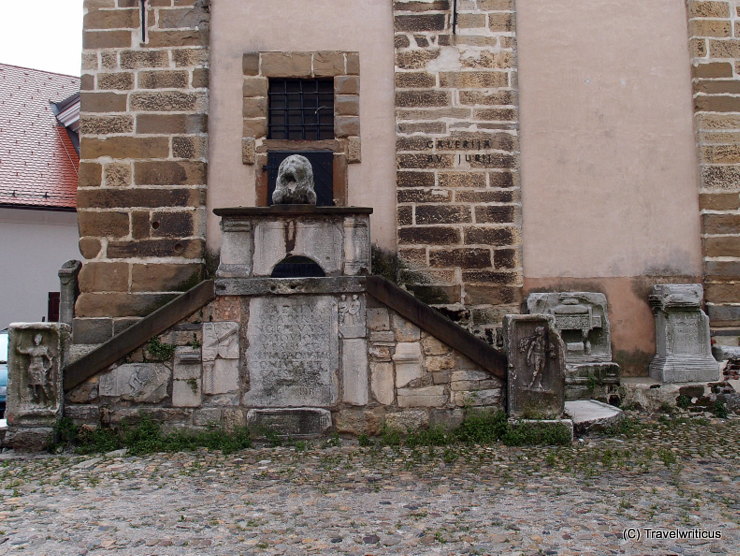
The Povoden Museum is the oldest open-air lapidarium in Slovenia. Its name origins from Simon Povoden, who collected antique monuments in the city’s tower base. The largest and most famous piece of this collection is the Orpheus Monument, a 5 m high monument standing in front of the city tower.

The Orpheus Monument is a Roman tombstone located in the centre of Ptuj. It is dedicated to Marcus Valerius Verus, the mayor and counsillor of the city in the 2nd century. The stone is part of the Povoden Museum. This is an open-air lapidarium at the base of the city tower.
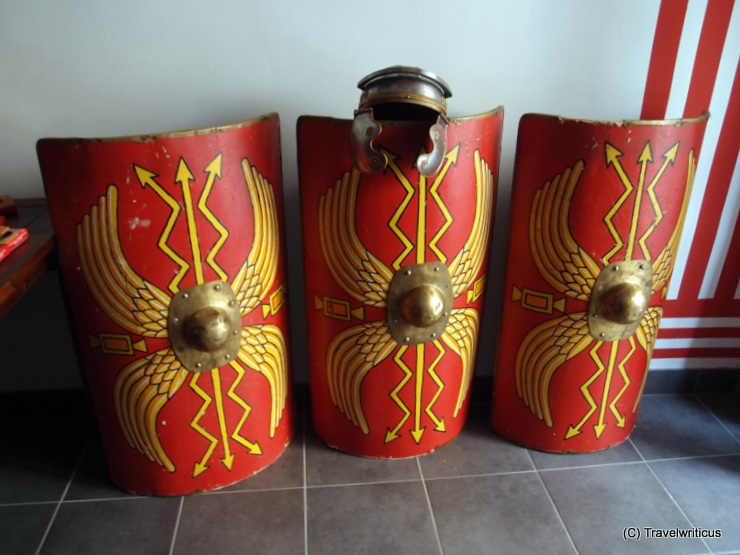
Reconstructions of Roman shields (scuta) seen at the rooms of the association POETOVIO LXIX which promotes the Roman heritage of Ptuj. Every August they organize a big Roman festival and re-enactment event in the city.
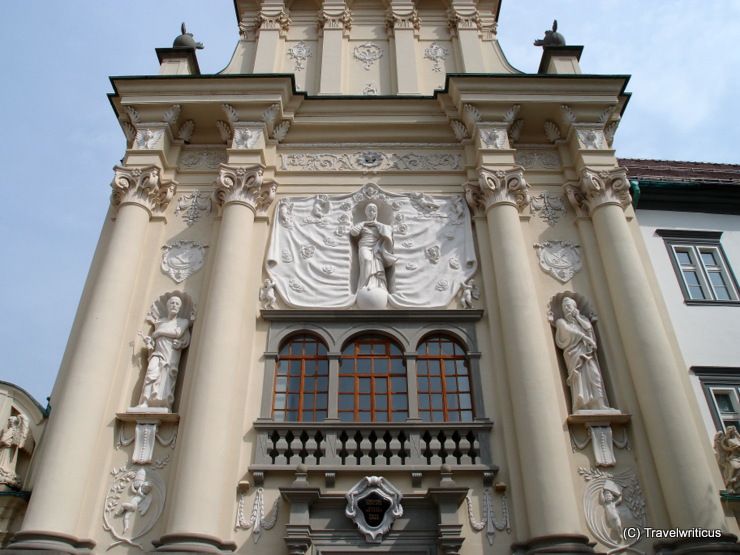
In the past, the Church of St Peter and Paul (Cerkev sv. Petra in Pavla) was considered one of the most beautiful Baroque churches in Slovenia. Following its destruction in World War II, the reconstructed version of the edifice still shapes the view of the city.